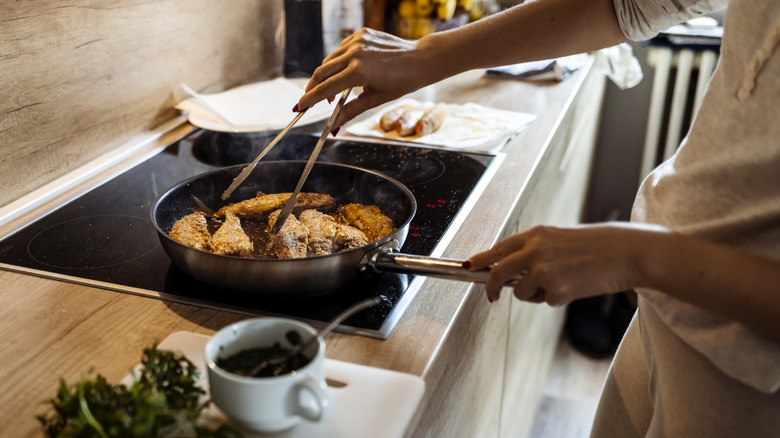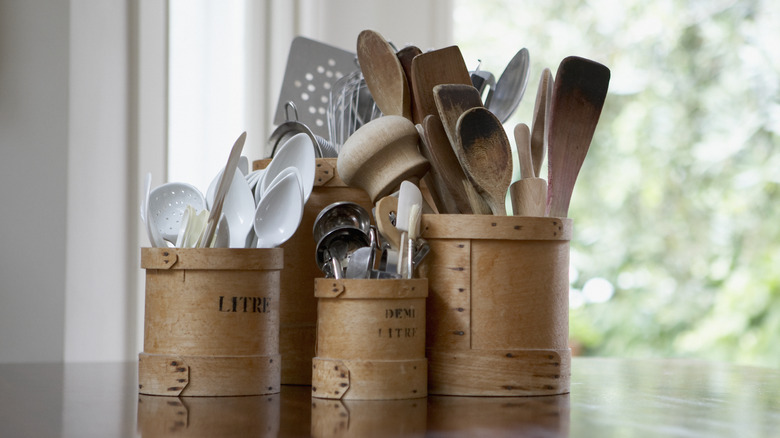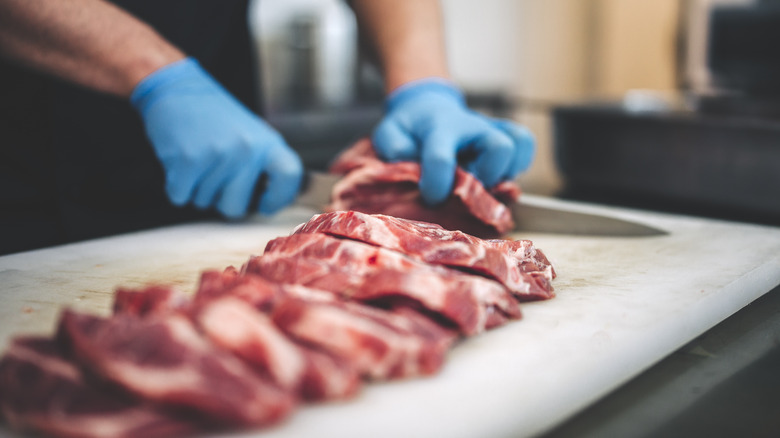The Meat Cross-Contamination Mistake You Might Be Making With Utensils
While many food safety measures are widely known — wash your hands before handling food, disinfect surfaces that come into contact with raw meat, etc. — others are the topic of debate. For instance, people argue about whether to change utensils while cooking meat, using one for raw ingredients and another for cooked. A recent Reddit thread addressed this very question, with the original poster acknowledging the contentiousness of the topic. "Heated debate going on in our house right now," they wrote, asking other users which approach they take.
Commenters were divided. "If you are exposing the utensil to the same heat as the meat...no need to swap," one answered confidently. Others agreed, claiming the heat cooked off any contamination on the utensils. Many, however, proclaimed that they swapped out or thoroughly washed their utensils, with some even doing so twice, using separate spoons for handling raw meat, meat in the process of cooking, and fully-cooked meat. Luckily, this argument can be settled once and for all; yes, you need to swap or thoroughly clean your utensils prior to serving meat in order to avoid cross-contamination.
USDA settles the debate: Swap out your utensils
When handling raw meats, the USDA recommends using two sets of utensils: One for raw meat and one for serving once it is cooked. This helps prevent cross-contamination of bacteria from raw meat onto meat that is about to be eaten. The USDA estimates that approximately 128,000 people are hospitalized each year due to food poisoning. Avoiding cross-contamination can help prevent these foodborne illnesses.
In situations such as grilling, changing tongs may be obvious — one set is used for the raw meat, and another for removing and serving the meat when cooked. However, this is less straightforward in situations where the utensils are exposed to the heating element, creating some confusion around this rule. Even professionals have been known to get things confused. An article in Southern Living details the confusion surrounding using the same utensil for stirring up your browned meat. If you've been using the same spatula for cooking and serving meat, you're far from alone, however, there's now a clear answer going forward.
More meat safety tips
Using a clean utensil to serve meat is one important step to preventing foodborne illness, but there are other food safety mistakes you may be making when cooking raw food. Other ways to avoid cross-contamination include using separate plates and cutting boards before and after cooking food to prevent your cooked items from coming into contact with bacteria. A common piece of advice is to own separate cutting boards for raw meat versus cooked items; this provides an extra layer of protection in case your dish soap doesn't quite kill off all contaminants.
In addition, don't forget other surfaces around your kitchen. Sanitize any countertops or refrigerator shelves that may have come into contact with raw products. If you use a dish towel to do so, consider color-coding your towels so the one that touches raw meat and bleach doesn't end up drying your clean dishes. Finally, be sure to sanitize your meat thermometer, which frequently comes into contact with both cooked and not-quite-cooked cuts.


